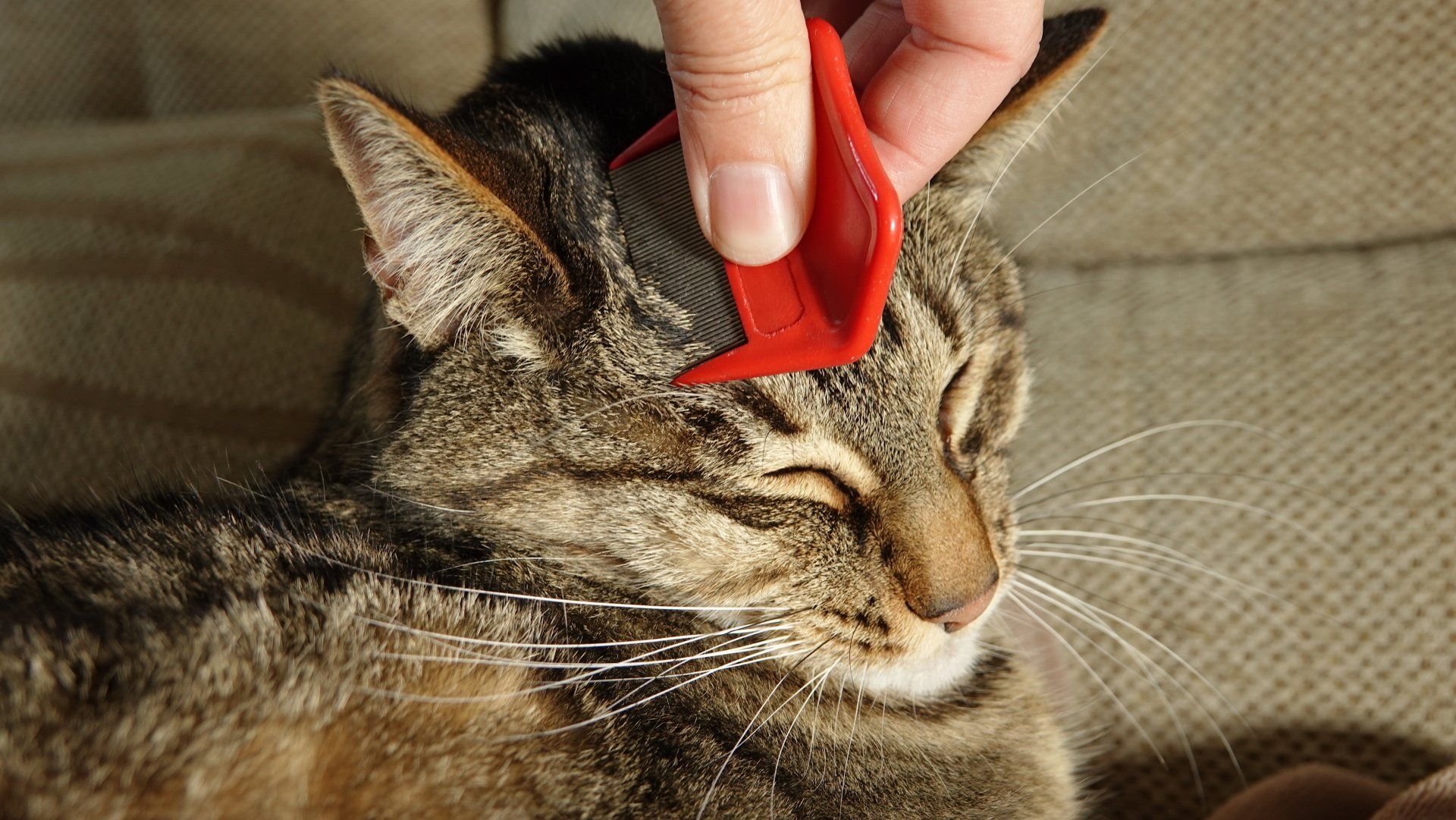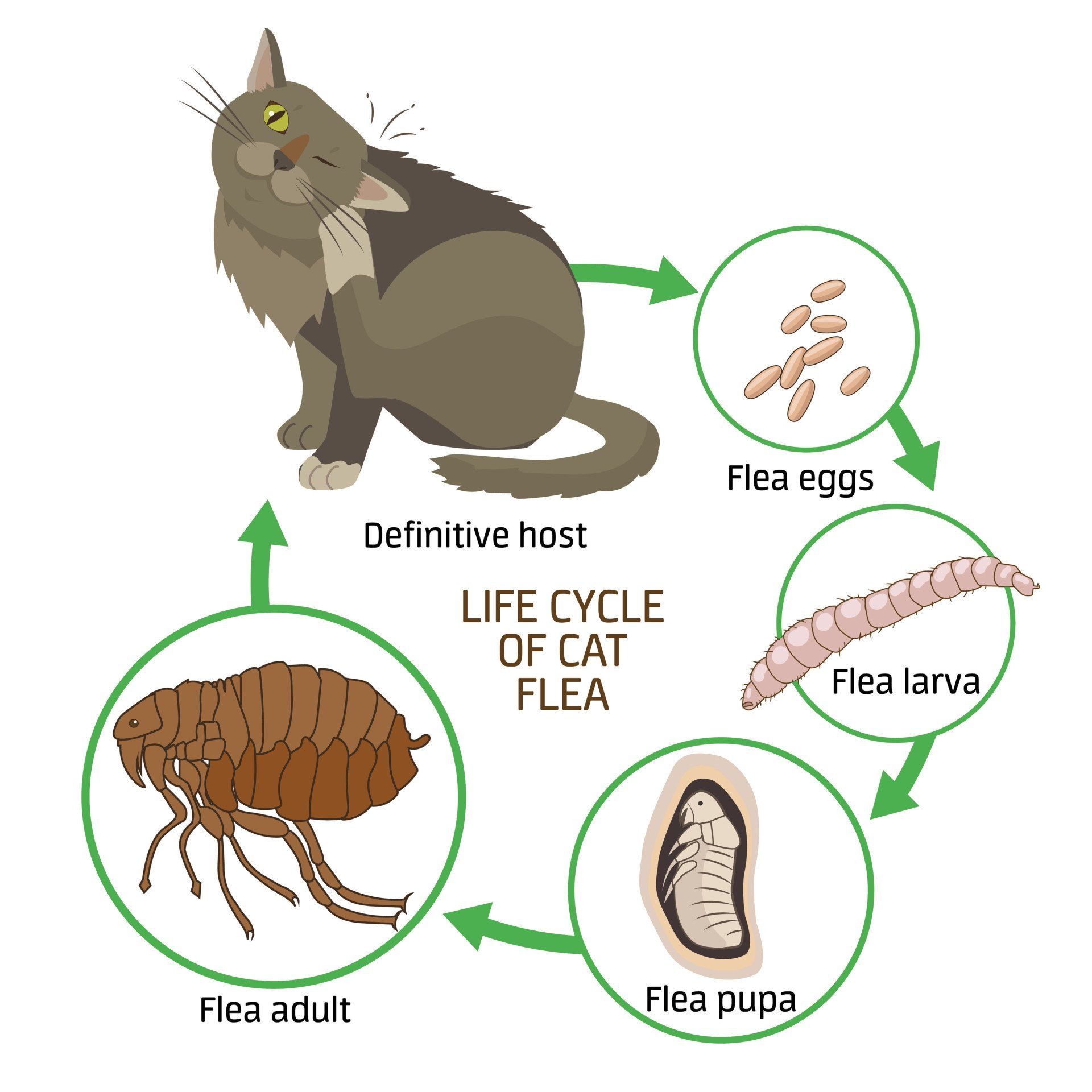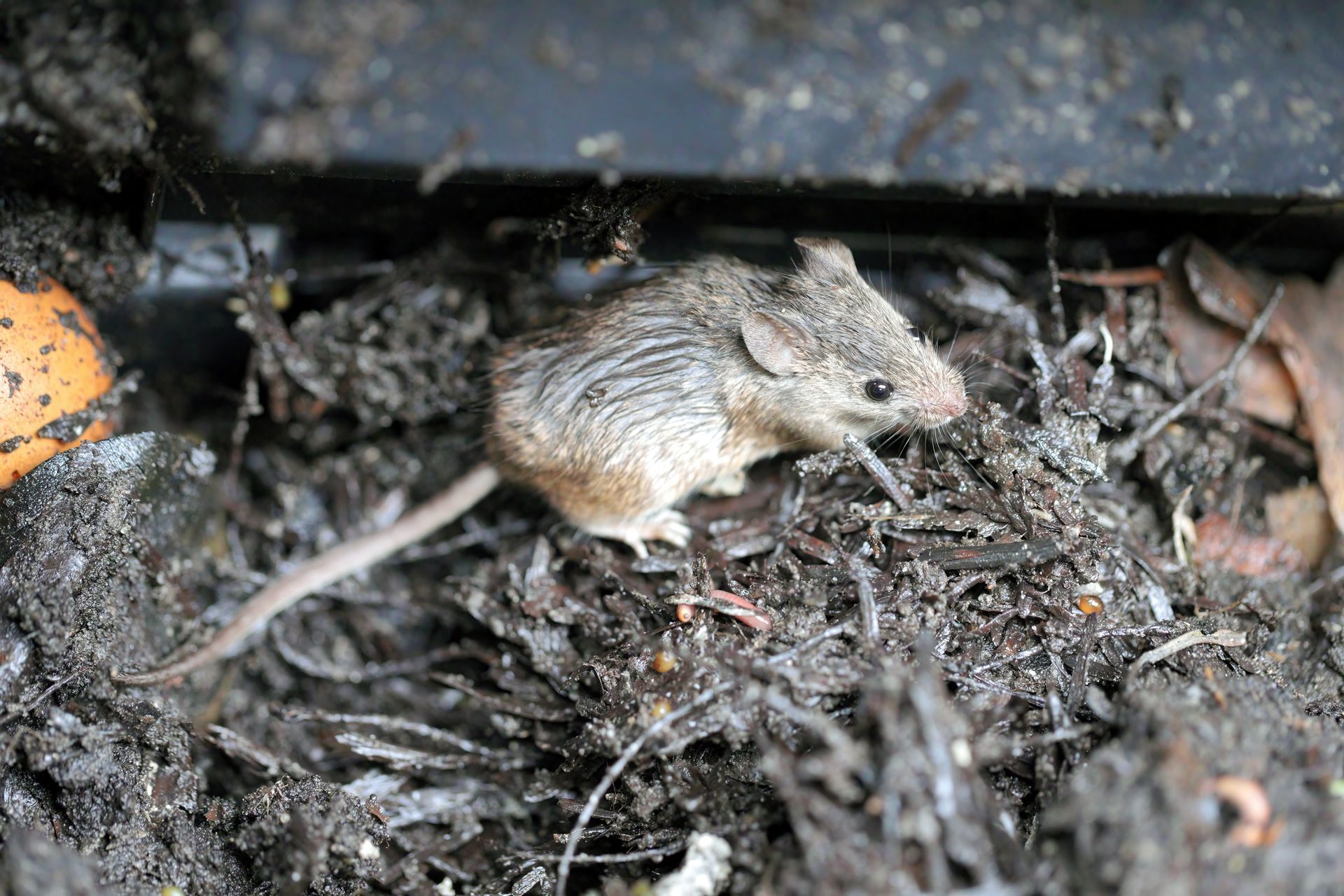How To Get Rid Of Fleas
How To Get Rid Of Fleas In Your Home

How to Get Rid of Fleas on Dogs & Cats?
Dogs and cats are the usual culprit responsible for introducing fleas into your home. They may have caught fleas from outside or from another infected animal. Pets will usually provide the first signs of fleas by scratching at irritated skin. With that said, by the time flea activity is noticeable on pets, pets usually account for only 5% of flea populations in a home. This means that the remaining 95% of fleas are the eggs, larvae, and adults that have already been shed and grown in the carpet and furniture of your home. If pets are involved, be sure to start pet flea treatment at the same time as home treatment to keep treatments on the same timeline and optimize your chances of disrupting the flea life cycle.
If there are signs of flea activity on your pets, bathe them with a soap or shampoo designed to kill fleas immediately. Pay special attention to around the face, neck, and tail in addition to any other areas that are irritated. After your pet is bathed, use a flea comb dipped in dish soap and water to kill and remove any remaining signs of fleas, flea eggs, of flea larvae. Any signs of new fleas or eggs after the initial treatment means that the process will have to be repeated. After fleas have been removed, introduce preventative measure like oral flea treatments, collars, or topicals that will prevent your pets from being targeted by fleas in the future. This will help keep your pets flea free and ensure that the rest of your home does not become reinfested after treatments are applied.
Our friends at Redfin have additional tips for your pet here.
How to Get Rid of Fleas on Humans?
Waking up with flea bites is the worst way to find out you have a flea problem. This is problematic because bites that appear out of nowhere while you sleep can also indicate bed bugs. That said, if your pet is also showing signs of irritation, there is a good chance you are being bitten by fleas. Getting rid of fleas so they stop biting you in your sleep requires a thorough cleaning of all bedding, towels, and curtains. This needs to be done on regularly on high heat to kill any fleas, larvae, and eggs. Steaming your mattress for any remaining fleas should kill off any left-over fleas but this process should be repeated frequently until signs of flea bites stop.
How to Get Rid of Fleas in Carpet & Furniture?
If fleas have hitchhiked a ride in on your pets, it is safe to assume that they have found their way into your carpet, furniture, and bedding. Fleas will be shaken loose and the fiber like material make it perfect for fleas to breed. A combination of steaming followed by vacuuming is effective against fleas and should be repeated on a regular basis until signs of flea activity have stopped. Steaming kills fleas, larvae, and most eggs on contact and vacuuming removes the remains. Vacuuming also play a critical role in removing flea waste which feeds the larvae and stimulates the remaining eggs which causes them to hatch. Fleas will be the most heavily concentrated around areas surrounding their hosts so focus extra attention on areas by pet bedding and other areas where pets are known to rest. Be sure to wash any bedding and pet bedding on high heat to ensure that fleas in all stages of their life cycle are killed and removed.
Utilizing chemical treatment options inside is also another option but should be done by a professional to ensure the safety of your pets and family. The use of local spot treatments will help expose heavily infested areas to growth regulators that will prevent the development of larvae once eggs hatch. This will ensure that follow up cleanings will catch the remaining fleas that were unable to reach maturity.
How to Get Rid of Fleas in Yard?
The other step in minimizing the potential of a flea infestation is to treat the areas outside where your pets may be picking fleas up. Fleas like to hide in places that are dark, humid, and warm so be sure to clear out shaded areas where your pet might rest from dead leaves and debris. Keeping grass short and removing all dead leaves, branches, and undergrowth to expose any shaded areas to sunlight is a good way to prevent harborage areas for fleas to thrive. Using residual pesticides and growth regulators are the final step in flea prevention. Chemical treatments should be applied by a licensed professional to ensure the safety of your family and pets.
Follow Up
Flea’s life cycle makes them difficult to manage because any remaining eggs that hatch after treatment can jumpstart another flea infestation. Permanently eradicating fleas will require some follow up inspection to ensure that flea populations do not make a comeback.
How to Spot Fleas?
Finding fleas inside is usually done by noticing signs of fleas on your pets. Adult fleas will latch onto hair follicles and “flea dirt” are tiny specs of flea waste on the skin of your pets. The other indicator would be signs of aggressive scratching where fleas are biting your pet. Using a flea comb on your pets is usually the easiest way of finding fleas in your pet’s coat.
Spotting fleas outside can be done by simply walking through your yard with white socks on. Walking through areas that are likely to have fleas will likely result in fleas jumping onto your legs which can be seen against the white socks. Any indicator of flea activity inside or outside of your home is a good sign that treatment should start to prevent an infestation from getting bigger.
How Long Can Infestations Last?
Flea infestations can last indefinitely if not treated appropriately. Even after treatment starts, an infestation can last over a couple months if treatment is not applied properly. This is because a flea’s life cycle makes them much more difficult to treat. Flea eggs can take up to 2 weeks to hatch and can be left behind by even the most thorough cleaning. This can cause a flea problem to reappear shortly after initial treatment. A flea also starts laying eggs as soon as 24 hours after its first blood meal and will lay up to 50 eggs every day. Professional help is generally recommended for flea infestations to increase the likelihood of success after the first treatment. Even if there is an on-going issue, EcoGuard’s flea control guarantee promises that our services will be successful, or we will have another technician out right away.
Things You Need to Remove Fleas
List of Services
-
1. Flea combList Item 1
This will be used to help find and remove fleas from your pets fur.
-
2. Hot Soapy WaterList Item 2
Using soapy water with the flea comb will help catch and kill adult fleas, larvae, and eggs.
-
3. Pet Safe ShampooList Item 3
Bathing your pet using a pet safe shampoo will help drown and remove fleas.
-
4. VacuumList Item 4
A vacuum with an internal bag system is a great way to capture fleas that are found in carpet and furniture.
-
5. Steam Cleaner
Helps kill and fleas and larvae in carpet and furniture by raising the temperature threshold in which fleas can survive.
-
6. Trash bags
These will need to be used to secure vacuum bags and discarded items that were once infested with fleas.
-
7. Washing machine & detergent
Used with hot water to clean and kill fleas from bedding, pet bedding, and pet toys.
-
8. White tube socks
Wearing white socks outside will help identify flea hotspots.
-
9. Yard cleaning supplies
Yard cleaning supplies will be needed to clear areas that are identified as problematic.
-
10. Insecticides
Flea insecticides should be safe for use around your pets and children. Professional help can assist with applications if needed.
-
11. Flea medication
Preventative flea medications for your pets will help ensure that fleas don’t pose a threat in the future.
Killing Fleas Tips & Prep
Prepping your home for flea treatment will increase the effectiveness of treatment options. Ensuring that areas are cleared for steaming and vacuuming will expose as much of the carpet as possible. This includes areas that might be overlooked during normal cleaning, like inside closets and under beds.
How to Get Rid of Fleas Naturally
Dish Soap – Dish soap works by reducing the surface tension of water which allows fleas hydrophobic shell to sink which results in fleas drowning. Dish soap is commonly used in homemade flea traps which are designed to catch fleas. These traps are only effective at finding instances of fleas and are not an effective treatment method.
Baking Soda – Baking soda is an effective desiccant that dries out fleas, larvae, and eggs. Sprinkle baking soda into the carpet prior to vacuuming.
Lemon Spray – Lemon juice spray is an effective homemade repellant that can be used in conjunction with other treatment methods. The citrus spray is essentially lemon slices that has been boiled in water and allowed to sit for 24 hours.
Diatomaceous Earth – Diatomaceous earth is a powder that acts as a desiccant but is non-toxic to humans. Apply to carpet and furniture 2 days prior to vacuuming for peak effectiveness.



















